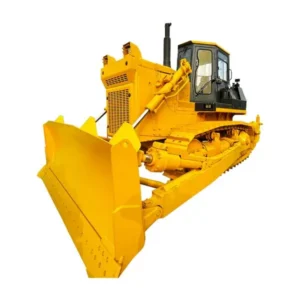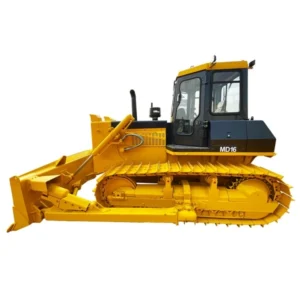Introduction to Dozer Operation

How to drive a dozer safely and efficiently: essential skills for operators.Operating a dozer, one of the most powerful and versatile pieces of equipment on a construction site, requires a deep understanding of the machine, keen attention to safety, and a mastery of specific operating techniques. This guide aims to equip dozer operators with the essential skills for safe and efficient operation, covering everything from pre-operational checks to advanced operating strategies.
Understanding Your Dozer
The Control Panel
Familiarize yourself with the control panel of your dozer. Knowing each control’s function is the foundation of efficient operation. This includes understanding the throttle, brake controls, steering levers, and blade control.
Safety Features
Modern dozers come equipped with a variety of safety features, such as rollover protection structures (ROPS) and seat belts. Understanding and utilizing these features can be the difference between a regular day at work and a catastrophic incident.
Pre-Operational Checks
Inspecting the Machine
Before starting your dozer, conduct a thorough inspection. Check for any signs of wear and tear, focusing on the tracks, blade, and engine compartment. Ensuring your dozer is in good working condition is essential for safety and efficiency.
Checking the Work Environment
Survey the work environment for potential hazards. This includes assessing the terrain, checking for overhead obstacles, and being aware of nearby workers or equipment.
The Fundamentals of Safe Dozer Operation
Basic Operating Techniques
Starting and Stopping
Learn the proper procedure for starting and stopping the dozer. This includes warming up the engine and using the brakes effectively to stop the machine safely.
Steering and Maneuvering
Mastering the art of steering and maneuvering a dozer is crucial. Practice smooth operations to avoid jerky movements and maintain control at all times.
Advanced Operating Techniques
Grading and Leveling
Grading and leveling require precision and patience. Learn how to adjust the blade for different tasks and how to maintain a constant speed for even surfaces.
Working on Slopes
Operating a dozer on slopes presents unique challenges. Learn the techniques for maintaining stability and preventing rollovers when working in such conditions.
Efficiency in Operation

Planning Your Work
Efficient operation begins with effective planning. Before starting, plan your movements and work sequence to minimize unnecessary maneuvers, saving time and fuel.
Maintenance Tips for Efficiency
Regular maintenance is key to keeping your dozer running efficiently. Follow a maintenance schedule, and pay attention to crucial components like the tracks, engine, and hydraulic system.
Safety Protocols and Emergency Procedures
Personal Protective Equipment (PPE)
Wearing the right PPE, including helmets, gloves, and high-visibility clothing, is non-negotiable for dozer operators. This gear protects you from common hazards found on construction sites.
Emergency Procedures
Be prepared for emergencies. Know how to quickly shut down the dozer and evacuate if necessary. Familiarize yourself with the site’s emergency response plan and your role in it.
Conclusion:how to drive a dozer
Operating a dozer safely and efficiently is a skill honed over time through education, practice, and a commitment to safety protocols. By understanding your machine, performing regular checks, mastering operational techniques, and staying vigilant about safety, you can become a proficient dozer operator who contributes significantly to the success of any construction project.
FAQs
What is the most important safety feature on a dozer?
- The most crucial safety feature on a dozer is arguably the Rollover Protection Structure (ROPS). This feature, in combination with the use of a seat belt, is designed to protect the operator in the event of a rollover, which is one of the most significant risks when operating heavy machinery.
How often should I perform checks on my dozer?
- Daily inspections are recommended before starting operations. These checks should include looking over the tracks, blade, engine compartment, hydraulic systems, and ensuring all safety features are functional. Additionally, follow the manufacturer’s guidelines for regular maintenance schedules to keep the dozer in optimal condition.
What are some common mistakes made by new dozer operators?
- Common mistakes include not conducting thorough pre-operational checks, underestimating the importance of regular maintenance, operating the dozer too fast for the conditions, not properly planning work sequences, and neglecting the use of safety equipment. Overconfidence in handling the machine without adequate experience can also lead to accidents.
How can I improve my efficiency while operating a dozer?
- Improving efficiency involves planning your work sequence to minimize unnecessary movements, maintaining a consistent speed for even grading, regularly practicing advanced techniques, and keeping your dozer well-maintained. Understanding the capabilities and limitations of your dozer can also significantly impact your operational efficiency.
What should I do if my dozer starts to overturn?
- If your dozer begins to overturn, the best course of action is to lower the blade to the ground to stabilize the machine if possible. Remain inside the cab, hold onto the safety bars (if available), and lean away from the direction of the overturn. Always wear your seatbelt to minimize movement and potential injury during such an event.









-150x150.webp)
